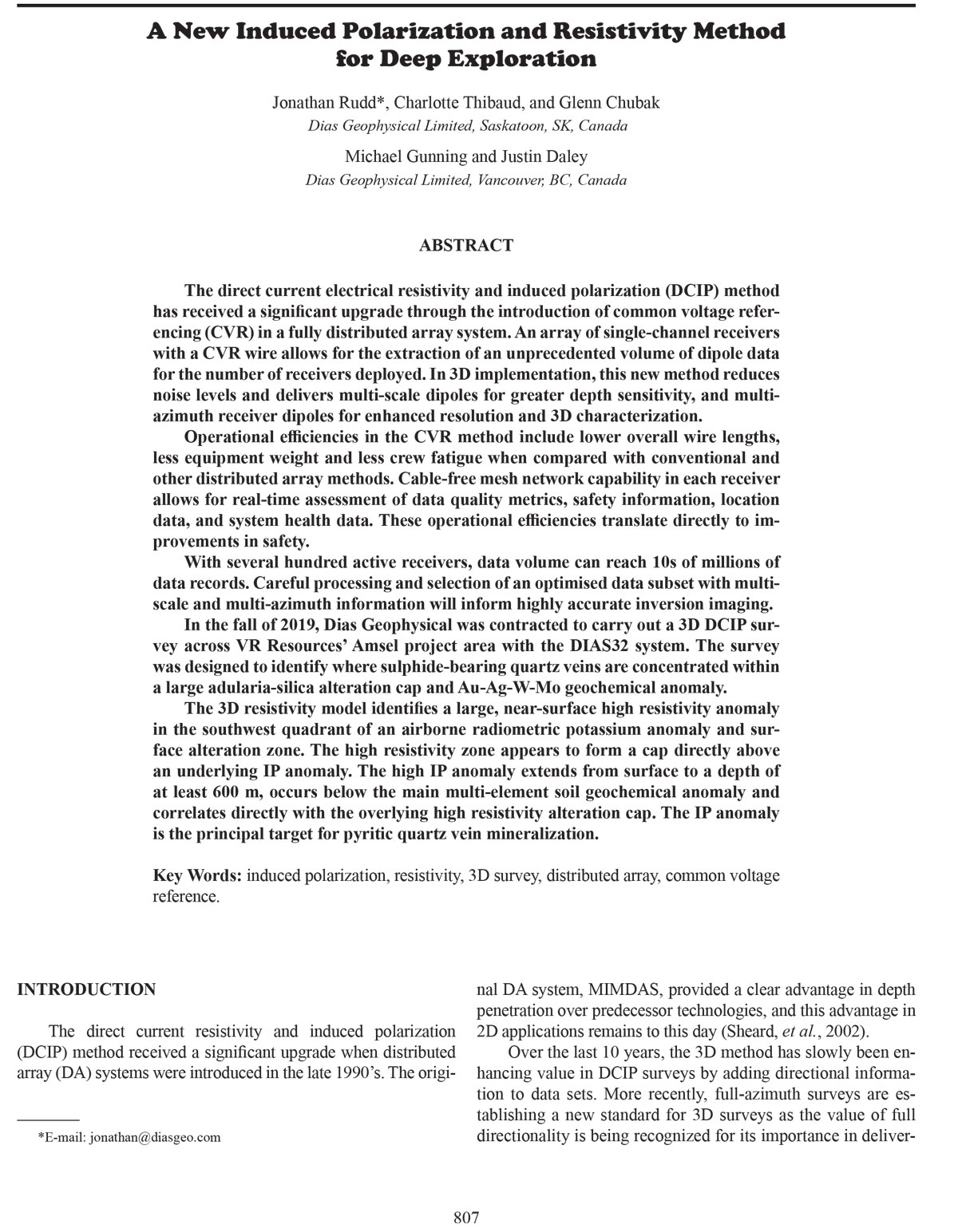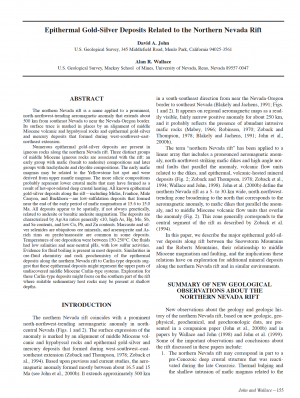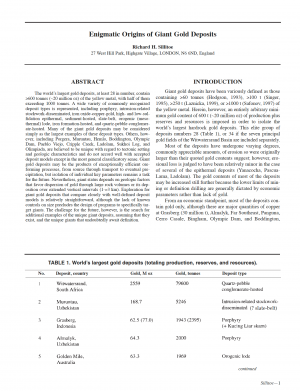Description
The direct current electrical resistivity and induced polarization (DCIP) method
has received a significant upgrade through the introduction of common voltage referencing (CVR) in a fully distributed array system. An array of single-channel receivers
with a CVR wire allows for the extraction of an unprecedented volume of dipole data
for the number of receivers deployed. In 3D implementation, this new method reduces
noise levels and delivers multi-scale dipoles for greater depth sensitivity, and multiazimuth receiver dipoles for enhanced resolution and 3D characterization.
Operational efficiencies in the CVR method include lower overall wire lengths,
less equipment weight and less crew fatigue when compared with conventional and
other distributed array methods. Cable-free mesh network capability in each receiver
allows for real-time assessment of data quality metrics, safety information, location
data, and system health data. These operational efficiencies translate directly to improvements in safety.
With several hundred active receivers, data volume can reach 10s of millions of
data records. Careful processing and selection of an optimised data subset with multiscale and multi-azimuth information will inform highly accurate inversion imaging.
In the fall of 2019, Dias Geophysical was contracted to carry out a 3D DCIP survey across VR Resources’ Amsel project area with the DIAS32 system. The survey
was designed to identify where sulphide-bearing quartz veins are concentrated within
a large adularia-silica alteration cap and Au-Ag-W-Mo geochemical anomaly.
The 3D resistivity model identifies a large, near-surface high resistivity anomaly
in the southwest quadrant of an airborne radiometric potassium anomaly and surface alteration zone. The high resistivity zone appears to form a cap directly above
an underlying IP anomaly. The high IP anomaly extends from surface to a depth of
at least 600 m, occurs below the main multi-element soil geochemical anomaly and
correlates directly with the overlying high resistivity alteration cap. The IP anomaly
is the principal target for pyritic quartz vein mineralization.




